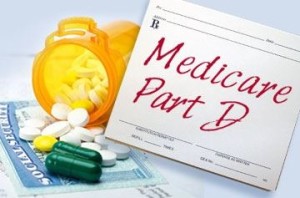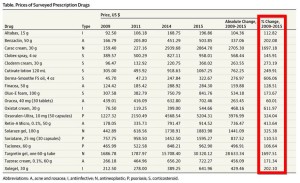- As outrage over prices grows, public sours on the drug industry (statnews.com)The Controversy over Rising Drug Prices:The Public’s Views (cdn1.sph.harvard.edu)Why the U.S. Pays More Than Other Countries for Drugs (finance.yahoo.com)
A new poll…Harvard T.H. Chan School of Public Health found significant skepticism about one of the drug industry’s most prevalent talking points. Almost two-thirds of Americans said they did not believe that Medicare negotiating with drug companies to lower prices would lead to fewer medicines being developed. And a majority — 55 percent — believes that even outright price controls wouldn’t slow the flow of new drugs…but the findings suggest that Americans reject a key counterargument the industry makes whenever the specter of government action on drug costs comes up: The current system, while imperfect, allows drug companies to create breakthrough lifesaving medications. They warn that any major changes, particularly more government involvement, could hamper that… poll points to several reasons underlying the public’s attitude…
- Billion-dollar babies (economist.com)
The high cost of R&D is used to explain why drugs giants merge, and why they must charge high prices. The reality is somewhat different…Pfizer’s boss, put it, the merger will create “a leading global pharmaceutical company with the strength to research, discover and deliver more medicines and therapies to more people around the world.”…the common suggestion that size is needed to create a research-driven powerhouse does not stack up…the industry is…moving away from a model in which giant firms throw huge sums at in-house research in a quest for ground-breaking new treatments… rather than spending heavily in many different areas of cutting-edge research, the largest firms are increasingly buying in drugs that are already in the course of development. In some cases they do so by buying other established firms…the drugs giants are buying smaller, younger biotechnology firms which focus on a single-treatment approach…in the past 20 years those drug companies that consistently did well in various therapeutic areas were earning more than 70% of their sales from products developed elsewhere.
- One in Four Americans Has Been Addicted to Painkillers or Is Close to an Addict (bloomberg.com)
New data show the staggering reach of the prescription drug epidemic...Doctors wrote 259 million opioid prescriptions for Americans in 2012, enough to medicate every adult in the country. Drug overdoses are eclipsing car crashes as a leading cause of accidental death for American adults…A poll out today from the Kaiser Family Foundation adds a troubling new number to the accounting: 27 percent of Americans report that they either have been addicted to prescription painkillers or have a family member or close friend who has…That's roughly 66 million U.S. adults for whom the opioid crisis has become intensely personal…Prescription drug addiction and a related heroin epidemic have proven a stubborn public health crisis since painkiller abuse began rising more than a decade ago…Kaiser's poll found strong majorities in support of policy solutions, including drug treatment, tighter scrutiny of prescribers, and "good samaritan" laws that protect drug users from being charged if they call for help when addicts overdose.
- Experts foresee big premium increases for Medicare drug plan (hosted.ap.org)
…many seniors are facing sharply higher premiums for Medicare's popular prescription drug program (Part D). The reason: rising drug costs have overtaken a long stretch of stable premiums…"Premiums are going up. Deductibles are going up,"…Government spending on the program also has risen significantly, driven by pricey new drugs, notably for hepatitis C infection. The cost for the hepatitis drugs in the Medicare program is expected to be $9.2 billion this year, a near doubling from 2014. Because of the prescription program's financial structure, taxpayers cover most of the cost for expensive medications. Three out of four adults infected with hepatitis C are baby boomers…Indicators signal rising costs across the program. Among them:
- independent estimates…show increasing premiums for stand-alone drug plans. The average premium will rise from $36.68 to $41.46 per month next year, or 13 percent…biggest increase since 2009.
- maximum deductible for prescription coverage will rise by $40, to $360…biggest increase in the deductible since the inception of Part D in 2006.
- taxpayer expenditures for the "catastrophic" portion of the benefit - in which beneficiaries with high drug bills pay only 5 percent of the cost - will rise by $4.5 billion in 2016, an increase of more than 14 percent. Spending for catastrophic coverage has doubled in just a short time, from $15.5 billion in 2012 to an estimated $31.2 billion this year.
The analyses...seemingly at odds with the message coming from the Obama administration, which estimates that drug premiums will remain stable in 2016, averaging $32.50 a month.
- Google’s next big idea: Mining health data to prevent disease (statnews.com)
Dr. Jessica Mega…medical director of Google Life Sciences…to lead the new firm’s ambitious quest to analyze genomic, molecular, and imaging big data from 10,000 volunteers to figure out what it means to be healthy — the so-called baseline study…Its experts try to turn blue-sky ideas into products by cross-pollinating medicine, engineering, and data science…I’m normally around physicians and patients. Now I spend my days with amazing engineers. The things you hear around here are “try to fail fast,” and “let’s just try ideas.” What I’ve taught myself to do is first say “yes” and try to be very open, then get analytical and move to a point where we’re being strategic and tactical…The way I think about it is trying to understand more about a given individual so they get the right treatment, get the right medications, and avoid the side effects. We’re trying to figure out ways to help empower people so that they don’t need to spend as much time in hospitals…People don’t want a lot of unnecessary, expensive, cumbersome, inaccurate tests. But we’re working to come up with things that provide actionable information.
- Apple Watch used to study epileptic seizures (baltimoresun.com)Johns Hopkins EpiWatch: App and Research Study (hopkinsmedicine.org)
For the 2.5 million people living with epilepsy… medications can help control their seizures — most of the time. But some suffer unpleasant side effects from the drugs. And a few remain at risk of death…Researchers at the Johns Hopkins University hope to help those with the neurological condition by collecting information about their seizures through their…Apple Watches…"Physicians often ask patients to record their seizures, but that can be hard, especially when a patient loses consciousness," said Dr. Gregory Krauss…who is working on the program, named EpiWatch…collects data that help researchers better understand epilepsy, while helping patients keep a more complete history of their seizures," he said…The data could not only help doctors adjust an individual's treatment to make it more effective and less burdensome, but could also help...counter sudden unexpected death, a danger some face from seizures.
- ‘Anti-malarial mosquitoes’ created using controversial genetic technology (theguardian.com)
Hundreds of genetically modified mosquitoes that are incapable of spreading the malaria parasite to humans have been created in a laboratory as part of a radical approach to combating the disease…The move marks a major step towards the development of a powerful and controversial technology called a “gene drive” that aims to tackle the disease by forcing anti-malarial genes into swarms of wild mosquitoes…mosquitoes were engineered to carry genes for antibodies that target the human malaria parasite...When released into the wild, researchers believe the modified insects will breed with normal mosquitoes and pass the anti-malarial genes on to their young, making an ever-increasing proportion of future generations resistant to the malaria parasite…To track which insects inherited the antibody genes, the scientists added a tracer gene that gave carriers red fluorescent eyes…Concern that drug and insecticide resistance are eroding recent successes in managing malaria has drawn attention to alternative approaches, including the use of genetically modified mosquitoes.
- For real R&D innovation, blur the lines between pharma and academia: Panel (fiercebiotech.com)

"My team has created a very innovative drug, but we're still looking for a disease to treat with it."
Collaborating with academia has been de rigueur in the pharma world for years, but it's a different game these days. Recognizing that scientists on both sides of the divide can't be distant neighbors anymore, drugmakers and academics are invading each other's personal space, even working side-by-side in the same labs. They're learning unexpected things about their counterparts. And they're coming to terms with the inherent conflict between research for curiosity's sake and research for the market…optimistic about their collaborative efforts, regardless of the challenges...innovation isn't innovation unless it's put to use--i.e., taken to market--would be anathema to many academics…we try to find the best brains and give them the freedom to pursue their curiosity,"…"Basically many leading academics don't do well in structured programs."..."Our worlds are approaching each other more and more,"…and as the results of these collaborations begin to hit the market, that will give the very idea a boost…global trends will make collaborations an even more important part of working in the pharma business: "Now, with the internet, how information flows, how this generation moves across the globe, with the knowledge-driven economy, you'll see the boundaries between institutions blur even more."
- Prices are skyrocketing for skin creams and pills (statnews.com)Changes in Retail Prices of Prescription Dermatologic Drugs From 2009 to 2015 (archderm.jamanetwork.com)
You may need a thick skin to withstand the rising cost of some dermatology medicines…A new study finds that prices of some widely prescribed creams and pills for skin conditions rose rapidly between 2009 and 2015. Of the 19 brand-name medicines analyzed, the retail prices of seven more than quadrupled…Prices for some generic drugs also rose considerably. Between 2011 and 2014, there was a mean increase of 279 percent, although prices for a few drugs remained largely unchanged…“The prices have skyrocketed with no justification,”…“This is a manifestation of anarchy pricing, which is what you get when you don’t have a competitive free market or competent government actions to protect patients,”...
- Expensive new Hep C drugs may be cost-effective even for early disease (reuters.com)
Treating hepatitis C with expensive new medicines at the earliest signs of liver damage improves patients' health and is also cost-effective, a new computer simulation suggests…"Going into this, I expected to find it did make sense to wait until there was a limited amount of liver disease, but what we found to our surprise is that it makes sense to start treatment at the earliest change in the liver,"…researchers created a simulated model to study the cost-effectiveness of a medicine…The imaginary subjects…of varying ages and with various stages of liver damage… While treating all stages of liver disease was cost-effective, the up-front cost is substantial. Treating half of those with hepatitis C would cost about $53 billion. That cost can be brought down if the price of the drug also decreases, the researchers write…"I think a key policy point here is that cost-effectiveness is important and this study shows that, but a next and important step is...to address the cost of the drug,"







